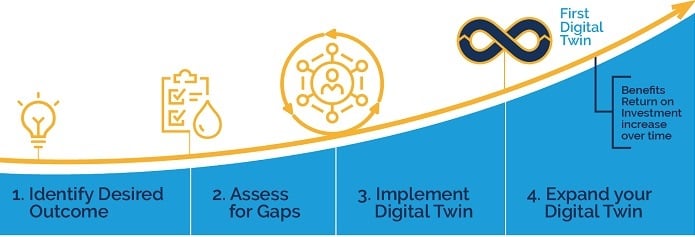S. Himmelstein | July 12, 2022
A roadmap for digital twin implementation to advance water industry efficiency and performance has been prepared by the Smart Water Networks Forum (SWAN).
As a real-time digital counterpart of a physical object or process, a digital twin uses analytical and predictive modeling to accelerate and validate decision-making to automate time-consuming and manual engineering or operator processes. For water utilities, this can translate into improved prediction and preparedness for seasonal or climate-driven condition changes, asset and operational health analysis for investment optimization, and scenario simulations for safer training environments.
 The four main steps in digital twin development. Source: SWAN
The four main steps in digital twin development. Source: SWAN
The Digital Twin Readiness Guide provides the framework and steps to achieve essential insights leading to more intuitive water systems operations, making each utility adopter more efficient. Global case studies detailing the successful implementation of SWAN’s digital twin architecture are included, covering a Singapore-based water reclamation plant, an urban drainage project for Denmark’s largest wastewater utility, and several water treatment and network projects in Spain and Italy.
